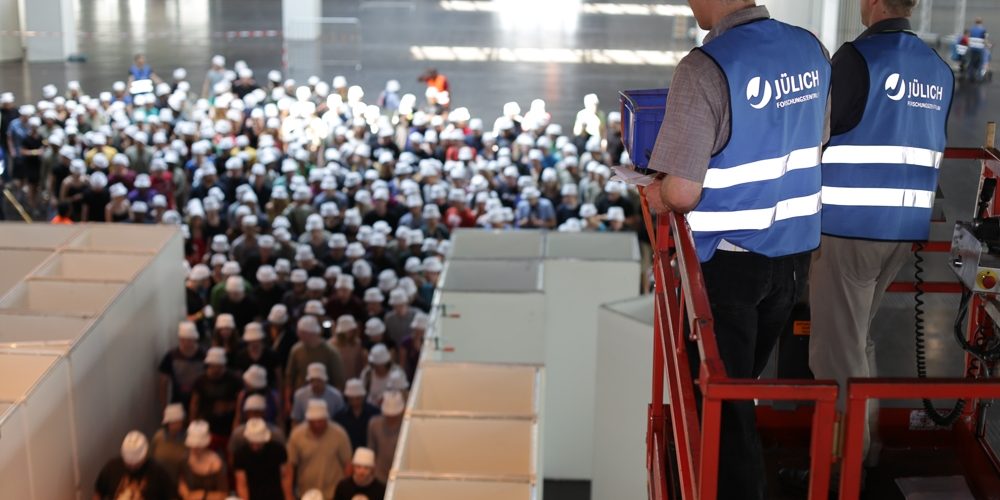When does pedestrian congestion occur? How does it turn into pushing and shoving, and when does it become life threatening? What can visitors at mega events do to keep out of harms way and to avoid a catastrophe like the one at the Loveparade in Duisburg 2010?
Safety at mega events was extensively discussed the 1st International Event Safety Conference at Prolight + Sound 2013 and will be tackled again at the coming trade fair on March 12th 2014 from 11 am to 6 pm in the Eventplaza of the Frankfurt fair.
Event managers, city administrators and even the German federal government know just how important this topic is. The Federal Ministry of Education and Research is currently promoting the project “BaSiGo – Bausteine für die Sicherheit von Großveranstaltungen”, in English building blocks for safety at mega events. The Jülich Research Center is also a part of the project. In June 2013 in Duesseldorf, employees carried out a four day experiment, in which the paths crowds chose in tight spaces were chronicled.
Stefan Holl who helped organize the experiments in Duesseldorf said, “The chronicles can help us to recognize critical situations in advance and aid us in taking the necessary measures.” Holl also knows that one cannot blindly trust the simulations. Every event has its own risk profile.
At the moment the chronicles are being analyzed, by the end of the year the first findings should be presented. The release of a safety manual, which can be used for each different type of event, should be ready by mid in 2015.
However, Holl can already give us a first insight, “Our analysis shows that visitors, even when in a dangerous situation, usually behave very sensibly. Even in a life threatening crush of people, many people still try to help each other.” The much used phrase “mass panic” is misleading. It distracts from the fact that often there is simply not enough room for all the visitors, and therefore, in an emergency, the evacuation routes needed to quickly evacuate the visitors are not available. According to Holl, the responsibility for this problem lies in the hands of the organizers.
Images: Forschungszentrum Jülich / Ralf Eisenbach






